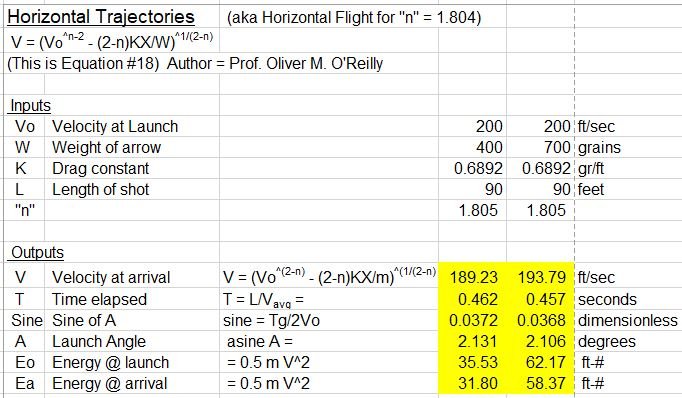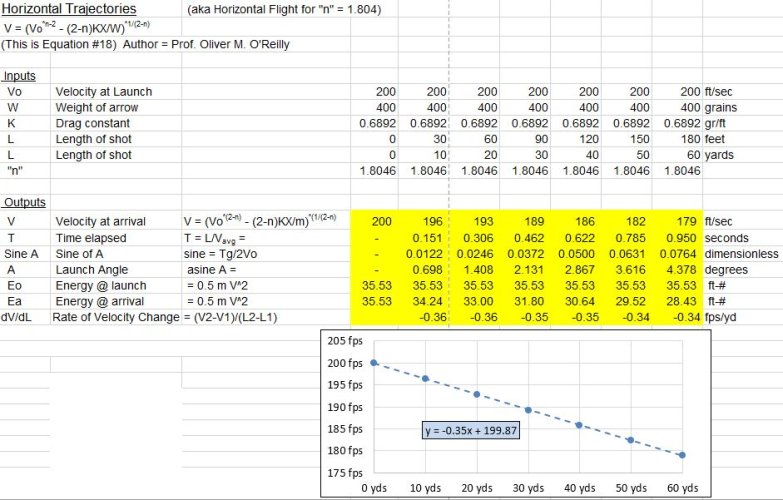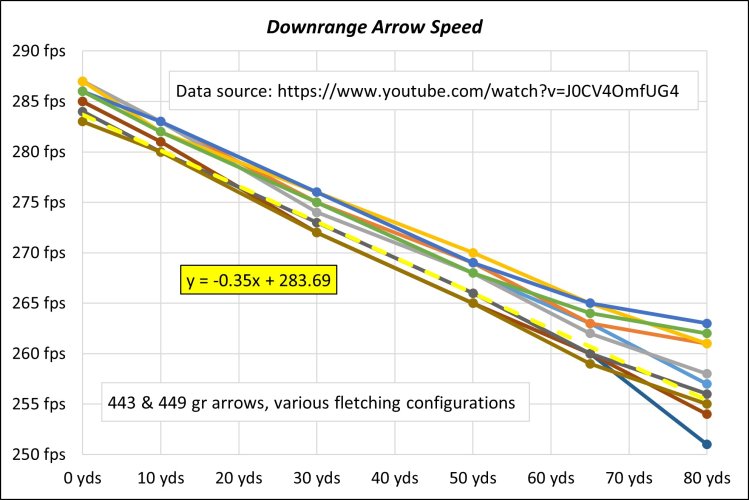Buckskinbob
Well-known member
- Joined
- Jul 12, 2022
- Messages
- 238
I enjoyed reading the debate on arrow foc. I've got nothing to add as I would be just saying the same things as others over again, but it got me thinking about arrow weight.
Most people seem to say that as arrow weight increases you get a higher trajectory, which is true if you lose speed because the bow weight stays the same. But let's say you have two arrows with the only difference between them being that one arrows is 400 grains and the other is 700 grains.
Both arrows leave a bow at 200 fps.
The bow draw weights would be different, ofcourse.
Which arrow has a flatter trajectory?
Most people seem to say that as arrow weight increases you get a higher trajectory, which is true if you lose speed because the bow weight stays the same. But let's say you have two arrows with the only difference between them being that one arrows is 400 grains and the other is 700 grains.
Both arrows leave a bow at 200 fps.
The bow draw weights would be different, ofcourse.
Which arrow has a flatter trajectory?







